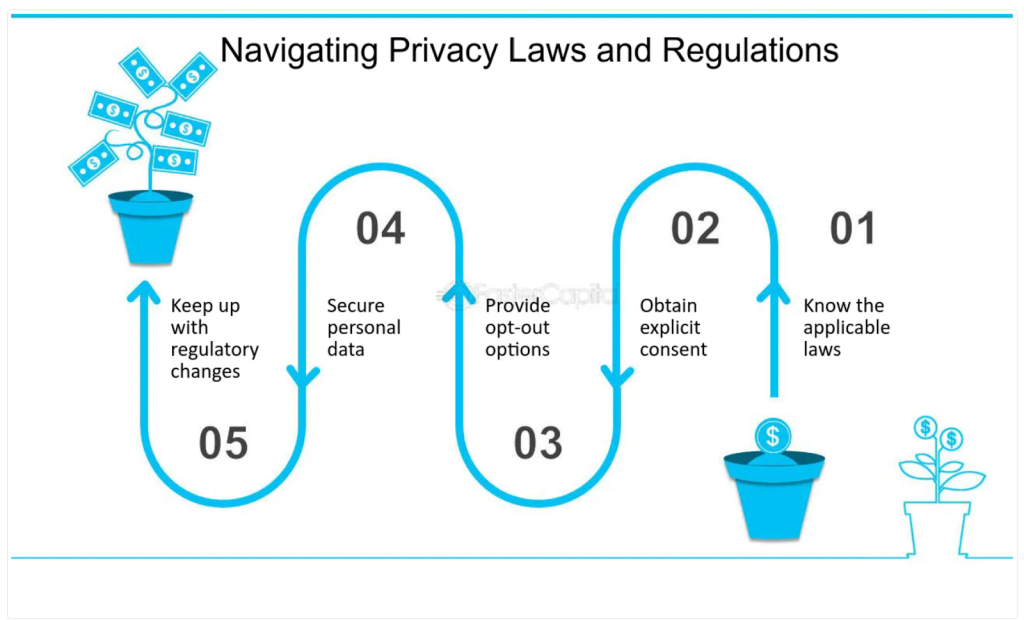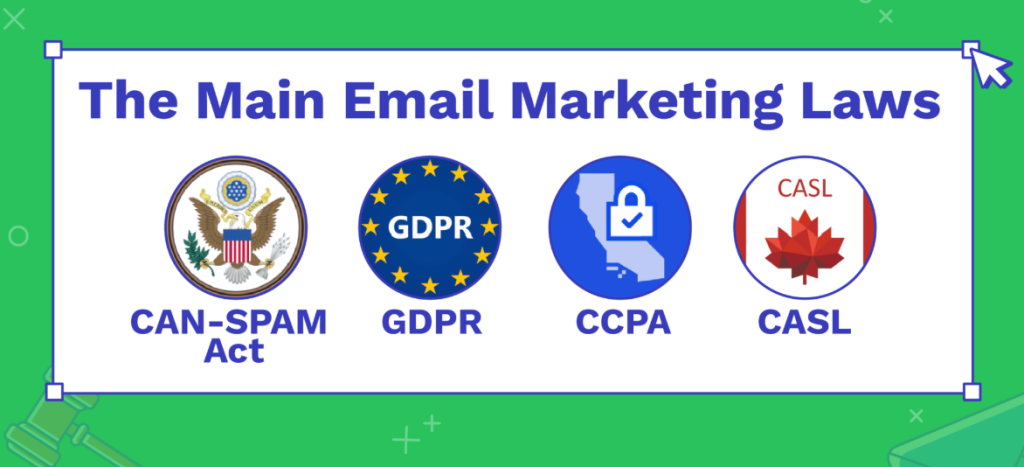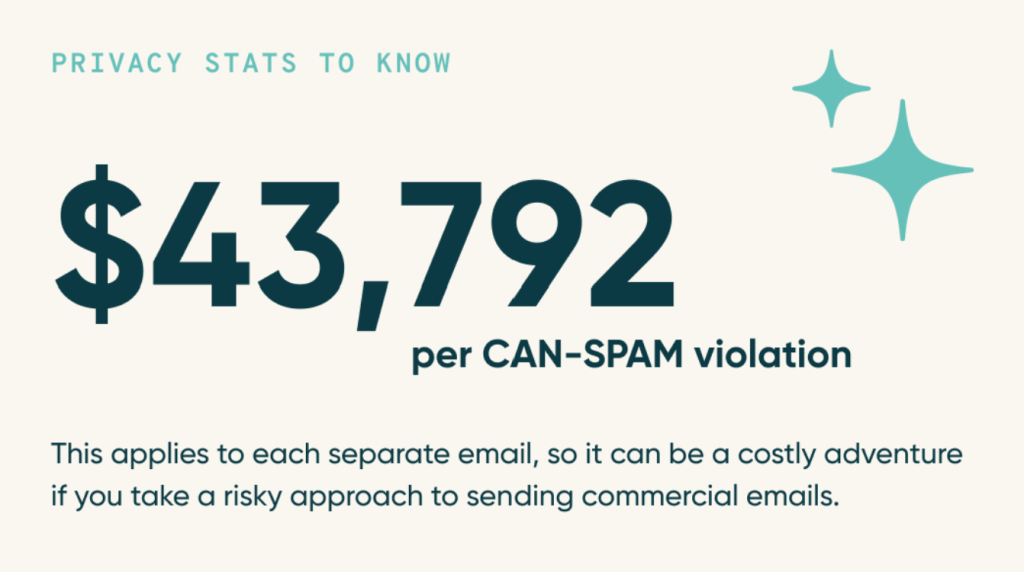- Home
- Fundamentals of Email Marketing
- Is Email Tracking Legal? A Mar ...

A famous quote in management studies is: “You can’t manage what you don’t measure.” This quintessential wisdom is true for email marketing as well: if you have no way to track your emails and the journey they send your customers on, you have no way of optimizing them. At the same time, many email marketers are increasingly aware of the legal challenges surrounding email marketing.
👉 So, the question “Is email tracking legal?” comes up more and more often. The answer is simple: yes, if the relevant rules are followed.
This article is here to support email marketers regarding email privacy laws. We try to break them down into clear and actionable pieces of information. Knowing what you are up against is half the battle when it comes to successful email marketing and compliance with email privacy laws.
What Is Email Tracking and Why It Raises Legal Concerns
What is email tracking?
Email tracking relies on a few simple technologies. One of them—and the most common one—is the tracking pixel, a small invisible image that loads when the recipient opens an email, signaling an open back to the sender. Link tracking works by routing clicks through a unique redirect URL so that the sender knows which link was clicked and by whom. Some platforms also use heatmaps, which visualize aggregate click activity across an email to show which sections or buttons attracted the most attention.
Why is this considered personal data processing?
While these methods might look harmless, they, in fact, reveal details tied to a certain person and their behavior: when they opened the message, how many times, which device they used, and sometimes even their approximate location. Under most email privacy laws, this qualifies as personal data processing. Considering this fact, many regulators see it as collecting behavioral data that falls under the same rules as cookies or analytics.
The balance between insights and user privacy
For marketers, the advantages of these techniques are usually quite obvious. Metrics such as open rates and click-through rates help campaigns and provide ROI: only if marketers understand whether their emails are actually being read and whether they lead to clicks can a successful campaign be implemented.
For recipients, however, tracking can feel intrusive, especially if it happens without their knowledge or prior consent. Nobody wants to feel like they are being spied on. That tension is the reason why governments worldwide (and especially within the European Union) have stepped in with email privacy laws to set boundaries on what’s acceptable and give individuals more control over their inbox data.
So, the key question here becomes not simply “is email tracking legal,” but under what conditions can it be used without crossing into invasive surveillance? Let’s get to this!

Email Privacy Laws by Region
The first focus is the EU’s (in)famous General Data Protection Regulation (GDPR). Feared by many, supported, probably, by more, the GDPR handles more or less everything you need to know regarding email privacy laws within the EU.

The GDPR & ePrivacy (EU/UK)
⚠️ Tracking = personal data processing
In the European Union and the UK, email tracking is considered personal data processing. That’s because the information collected can be linked to an identifiable person. For this reason, regulators treat this in the same way they treat cookies or online tracking.
⚠️ Consent vs. legitimate interest
A reasonable question for a marketer will be, “Can I rely on legitimate interest instead of getting consent for tracking?” Under the GDPR, legitimate interest can be a valid basis for some processing, but the ePrivacy Directive adds another layer of complexity to the equation. Since ePrivacy requires consent for storing or accessing information on a user’s device, tracking pixels usually fall under that rule. This means that opt-in consent is the safest and most widely accepted approach in the EU and UK when it comes to email tracking.
⚠️ Role of privacy policies and opt-ins
Transparency is another key requirement. It’s not enough to hide tracking information in a long privacy notice. Companies are expected to tell subscribers openly, at the time of sign-up, that their emails will include tracking. Opt-in checkboxes or clear explanations on forms are now more common. This way, users know what they are agreeing to, while companies stay within the boundaries of email privacy laws.
The CAN-SPAM Act (United States)
⚠️ Not focused on tracking itself, but on emails integrity
In the U.S., the CAN-SPAM Act is the main law regulating commercial emails. Please do not take “can spam” literally though. Unlike the GDPR, it doesn’t specifically address email tracking. That means there is no legal requirement to obtain consent for using tracking pixels or link tracking.
Instead, CAN-SPAM focuses on the content and honesty of emails. Senders cannot use misleading subject lines or header information. Every email must include a valid physical address and a clear and easy-to-find unsubscribe option. Unsubscribe requests must be honored right away. As long as tracking is not deceptive and unsubscribe rules are respected, email tracking legal concerns are minimal in the U.S. context. However, providing a valid physical address can be a challenge for some email marketers, especially those operating out of their own homes.
CASL (Canada)
⚠️ Express consent requirements
Canada’s anti-spam legislation (CASL) is significantly stricter than CAN-SPAM and, in principle, closer to the guidelines provided by the GDPR. It requires express or implied consent before sending any commercial email. This rule applies before you even consider tracking, which means that most marketing emails in Canada are opt-in by default.
⚠️ Rules on disclosure of tracking practices
When collecting consent, organizations are also expected to be transparent about their practices. That includes letting people know if emails will contain tracking pixels or links. As with the GDPR, you cannot track users’ behavior quietly—subscribers should be aware of what’s happening when they open or click an email in advance.
The Privacy Act (Australia)
⚠️ Importance of transparency and user rights
Australia regulates marketing emails under both the Spam Act and the Privacy Act. Together, these laws require consent for sending emails and fair, transparent practices when collecting personal data. Hidden or undisclosed tracking approaches are seen as unfair under Australian privacy standards. Organizations are also expected to minimize the data they collect, explain their practices in a privacy policy, and give users the ability to unsubscribe or opt out.
Other notable regulations
⚠️ Brazil (LGPD)
Brazil’s General Personal Data Protection Act (LGPD) treats email tracking data as personal information, similar to the GDPR. That means marketers need a valid legal basis—consent being the clearest—and must disclose their practices.
⚠️ California (CCPA/CPRA)
While California is part of the United States, some of its laws differ—and they tend to be on the stricter side. California’s privacy laws focus on giving consumers transparency and control. If email tracking data is linked to an identifiable person, it falls under the definition of personal information. Businesses must disclose the categories of data they collect and, if they “sell” or “share” data, provide consumers with the right to opt out. For marketers, this means being open about tracking and making sure subscribers can use their rights.
What Email Tracking Is Considered Non-Compliant (Shady Practices)
❌ Hidden or undisclosed tracking
One of the biggest red flags for any regulator is when email tracking is done secretly. If subscribers aren’t told that an email contains a tracking pixel or that their clicks will be logged, it’s considered unfair and misleading. Under most email privacy laws, transparency is the most important factor. Recipients should know that tracking is happening; otherwise, the practice risks being classified as non-compliant or even unlawful.
❌ Selling or sharing individual click/open data
Another line you should not cross is selling or passing on detailed tracking information about individuals. While aggregated data (like “60% of subscribers opened this newsletter”) is acceptable, sharing lists that show exactly which customers opened which emails or clicked which links is much more problematic. In many regions, this would be treated as processing or disclosing personal information for a purpose the user never agreed to.
❌ Sending emails without valid consent or relationship
Even before tracking comes into play, sending an email without a proper legal basis is non-compliant in itself. In the EU, Canada, and Australia, consent is required before marketing emails are sent at all. In the U.S., while opt-in isn’t mandatory, CAN-SPAM requires that messages are not deceptive and that unsubscribes are possible. Adding hidden tracking to emails that were already sent without consent only makes the situation worse. For regulators, this is a clear sign of spam and surveillance.

Best Practices for Legal & Ethical Compliance
✅ Transparency: Update privacy policies to disclose tracking
If you use email tracking, you have no other choice but to make it clear. Your privacy policy should explain what data you collect, how you use it, and whether it is shared. By being transparent, you keep email tracking legal and build more reliable relations with your subscribers.
✅ Consent: Use opt-in where required (the GDPR, CASL)
In regions like the EU, UK, and Canada, regulations require express or clear consent before tracking can take place. This often means using an unchecked box at sign-up or otherwise making sure subscribers actively agree.
✅ Opt-out options: Allow subscribers to choose plain-text/no-tracking versions
Even in jurisdictions where consent isn’t legally required, it’s best practice to give subscribers choices. A simple way is offering a plain-text version of your newsletter, which by default does not include tracking pixels.
✅ Respect data minimization: Don’t overcollect or misuse subscriber data
Collect only what you need and nothing more. If your goal is to measure open rates, you don’t need to keep precise geolocation data or long-term individual activity logs. Limiting the scope of data collection helps reduce risk and keeps your practices aligned with modern email privacy laws.
✅ Keep unsubscribes simple: One-click unsubscribe is required in most regions
Whether it’s the GDPR, CAN-SPAM, CASL, or Australia’s Spam Act, one principle is universal: unsubscribes must be easy. A one-click link at the bottom of your email is the standard. Don’t hide it, don’t require a login, and don’t delay. Making opt-out simple is legally required, but it also shows respect for your audience’s choices.
To Sum Up
Yes, email tracking is legal—for many, this might be the biggest takeaway. However, an even more important takeaway: it is only legal if you follow certain laws and principles. This can get tricky, because they differ significantly between regions.
This article covered regulations surrounding email tracking mostly for the EU and the UK, the United States (with a notable mention of California’s drastically stricter legislation), Canada, and Australia. If you follow these rather straightforward rules, you should be able to track your emails and make your clients happy—without a risk of running into any legal trouble.



